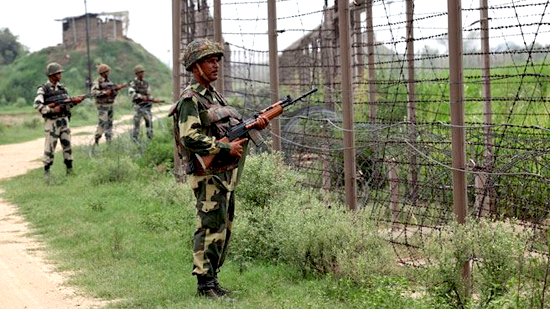
Jammu, Aug 12: Pakistani troops started heavy firing on forward Indian locations in Edgar area of Poonch late Sunday night. Confirming this, Defence Ministry spokesman Lt Col R K Kalia said they were firing from small and automatic weapons. It is still going on, he said.
The Indian Army also retaliatiated. The exchange of fire was so fierce that people in Poonch town had climbed on their rooftops surprised by the light caused by flares.
This has been the fifth violation of the 2003 ceasefire agreement from Pakistan's side in the last 48 hours.
Earlier in the day, Pakistan troops opened fire on nearly half a dozen forward Indian positions, injuring a Border Security Force (BSF) personnel. Komal Kumar of Arinia was injured after unprovoked firing by Pakistan troops in Kanachak area along the LoC.
In another incident, Pakistan troops targeted Indian posts in Mendhar with machine guns and 82 mm mortar, sources said. Indian troops retaliated and the firing, which began at 10.00 am, continued till 2.50 pm. There were no casualties or damage reported in this incident.
Tension has been mounting on both the LoC and the IB since five soldiers were killed on the LoC at Chakkan Da Bagh by Pakistani troops and militants in Pooch on August 6. Heavy firing was also reported from the same area on Friday night, which lasted for several hours, sources said.
In view of the continued violation of the ceasefire agreement between the two countries, sources said troops have been instructed to restrict their movement in open areas near the border.
BSF man hit by Pak bullets dies A BSF man who was critically injured in firing from the Pakistani side of the border in Samba district in Kashmir last week, succumbed to his injuries in the wee hours of Sunday.
Head constable Ram Niwas Meena, who was airlifted to the AIIMS Trauma Centre on August 7 from Jammu with grievous injuries in his chest, abdomen, kidney and liver, died of multiple organ failure, according to doctors.
Meena breathed his last on Sunday. Meena's mortal remains have been taken to his village in Rajasthan.
His wife, Uganti Devi, took his body back home on Sunday.
Meena, who hails from Dausa district in Rajasthan was a father of three, and had joined the BSF in 1990.





Comments
Add new comment